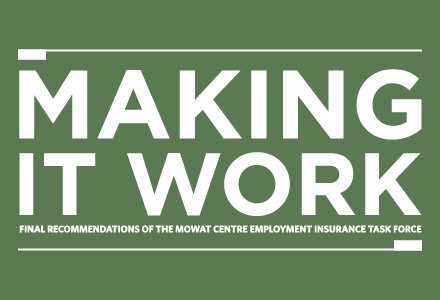The Issues
1
.
What Should the Objectives of the EI Program Be?
The design of a support program for the unemployed requires reconciling a number of objectives.
More
2
.
"Not Quite Insurance"
Theoretically, EI works like insurance. EI is a social insurance scheme. While private insurance is usually voluntary, social insurance is usually mandatory.
More
3
.
Social Assistance and EI
Both social assistance (welfare) and EI are income assistance programs, but EI and social assistance are delivered in isolation from one another by different levels of government.
More
4
.
Experience Rating
All employers and employees presently pay into the EI system at the same rate, but benefits are accessed far more frequently by laid-off workers from certain industries and businesses.
More
5
.
Regional Differentiation
EI currently divides Canada into 58 “economic regions.” The rules that determine the availability of EI benefits differ in each.
More
6
.
910 Hour Rule
New entrants to the labour market (individuals who have never worked in Canada or have not worked in the past two years) must work 910 hours (23 weeks full-time) prior to losing a job to qualify for EI.
More
7
.
Access to EI Training Benefits
EI training benefits are intended to help EI beneficiaries gain the skills they need to get a new job. To qualify for training benefits, one first has to qualify for EI income support.
More
8
.
Self-Employed
Self-employed workers were recently granted the right to opt-in to maternity, parental leave and compassionate care benefits after one year of contribution.
More
9
.
Temporary Foreign Workers
At present, there are more individuals admitted to Canada every year as temporary foreign workers than as permanent residents, the status which used to account for the great majority of new arrivals.
More
10
.
Rate Setting
Rate setting is the process by which employer and employee contributions to EI are set by government.
More
Latest Reports
The final recommendations of the Mowat Centre Employment Insurance Task Force.
BACKGROUND PAPER - Jon Medow analyzes regional differentiation in EI weekly benefit calculation and the uneven federal approach to support of low income workers.
BACKGROUND PAPER - John Stapleton examines changes in social assistance caseloads coming out of the major economic recession that began in the fall of 2008.
BACKGROUND PAPER - Michael Mendelson and Ken Battle investigate the gaps in Canada's system of support for the unemployed and propose to fill them with Temporary Unemployment Assistance, a new federal benefit.










